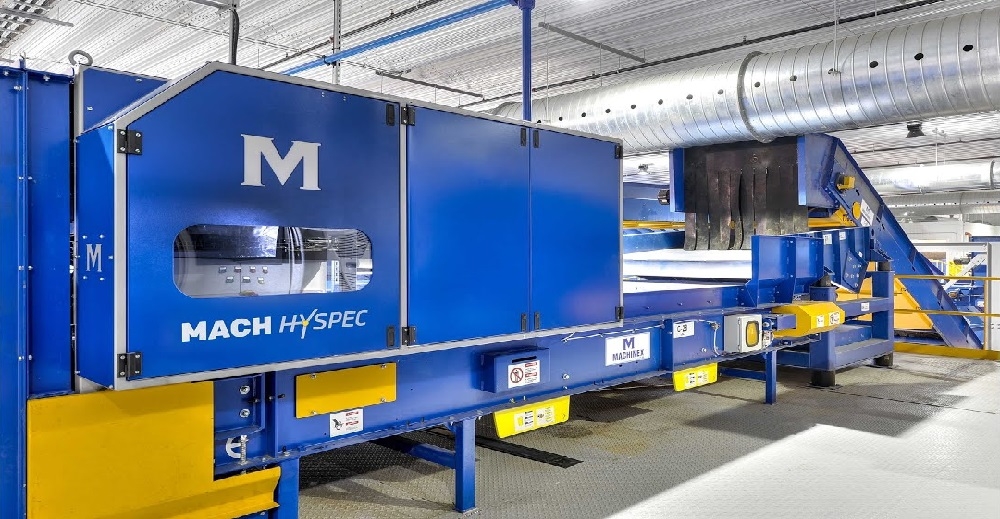The Evolution and Impact of Optical Sorting Technology

Optical sorting technology has revolutionized the way industries handle sorting processes, providing a level of efficiency and accuracy that manual sorting simply cannot match. This article explores the history, technology, applications, benefits, and future trends of optical sorting, shedding light on its significant role across various sectors.
Understanding Optical Sorting
Optical sorting, also known as digital sorting, is an automated process that utilizes cameras and lasers to sort solid products based on their physical and chemical properties. This technology can identify an object’s color, size, shape, and structural attributes, allowing for the separation of defective products and foreign materials from the production line. By comparing items against user-defined accept/reject criteria, optical sorters enhance product quality, maximize throughput, and reduce labor costs.
Historical Context
The roots of optical sorting date back to the 1930s, driven by the need to automate the sorting of agricultural products. The first color sorters were developed in 1931, marking the inception of this technology. Over the decades, advancements in optical sorting have expanded its applications beyond agriculture to include industries such as pharmaceuticals, recycling, and food processing. The introduction of advanced optical sensors in the late 1990s and early 2000s significantly improved sorting efficiency and accuracy, paving the way for modern optical sorting systems.
Components of Optical Sorting Systems
Optical sorting systems typically consist of four main components:
- Feed System: Ensures products are spread into a uniform layer for consistent inspection.
- Optical System: Comprises lights and sensors that illuminate and capture images of the products.
- Image Processing Software: Analyzes the captured images to classify objects based on predefined criteria.
- Separation System: Utilizes mechanisms such as compressed air or mechanical devices to remove rejected items while allowing accepted products to continue down the production line.
Technological Advancements
Recent advancements in optical sorting technology have been driven by the integration of artificial intelligence (AI) and machine learning (ML). These technologies enhance the sorting capabilities of machines, allowing them to learn from vast datasets and improve their performance over time. For instance, hyperspectral imaging is now used to identify materials based on their chemical composition, enabling more precise sorting.
Key Sensor Technologies
- Hyperspectral and Multispectral Cameras: These advanced sensors provide unparalleled accuracy in detecting and sorting objects based on various characteristics, such as color and shape.
- Near Infrared (NIR) Technology: NIR sensors analyze the chemical composition of materials, allowing for improved sorting efficiency, particularly in recycling applications.
Applications Across Industries
Optical sorting technology has found applications in a diverse range of industries, including:
- Food Processing: Ensures the removal of defects and contaminants from fruits, vegetables, and grains, thereby enhancing food safety and quality.
- Recycling: Optical sorters efficiently separate recyclable materials from waste, promoting sustainability and reducing environmental impact.
- Pharmaceuticals: Used to sort and inspect pharmaceutical products for quality assurance.
- Mining and Minerals: Optical sorting aids in the separation of valuable minerals from waste materials, improving resource extraction efficiency.
Benefits of Optical Sorting
The adoption of optical sorting technology offers numerous advantages:
- Increased Efficiency: Optical sorters can process large volumes of materials quickly, significantly reducing sorting times compared to manual methods.
- Enhanced Accuracy: The technology minimizes human error and ensures consistent sorting based on predefined criteria.
- Cost Reduction: By reducing labor costs and increasing throughput, optical sorting can lead to significant savings for businesses.
- Improved Product Quality: The ability to detect and remove defects ensures that only high-quality products reach consumers, enhancing brand reputation.
Challenges and Limitations
Despite its many benefits, optical sorting technology is not without challenges:
- Initial Investment: The cost of implementing optical sorting systems can be high, which may deter smaller businesses from adopting the technology.
- Complexity: The sophisticated hardware and software components require technical expertise for installation and maintenance.
- Limited Applicability: Some materials with similar optical properties may pose challenges for accurate differentiation, limiting the effectiveness of optical sorters in certain applications.
Future Trends in Optical Sorting Technology
The future of optical sorting technology looks promising, with several trends shaping its evolution:
- Integration of AI and ML: As these technologies continue to advance, they will further enhance the capabilities of optical sorting systems, allowing for real-time learning and adaptation to different materials.
- Sustainability Focus: The push for sustainable practices in industries such as recycling will drive the development of more efficient sorting technologies that contribute to waste reduction and resource recovery.
- Compact and Modular Solutions: Manufacturers are increasingly designing optical sorting systems that are compact and modular, making them more accessible to businesses with limited space.
- IoT Integration: The Internet of Things (IoT) will enable real-time monitoring and control of optical sorting systems, providing valuable data for process optimization and maintenance.
Conclusion
Optical sorting technology has transformed the landscape of sorting processes across various industries, offering unparalleled efficiency, accuracy, and quality control. As advancements in AI, sensor technologies, and sustainability practices continue to evolve, the impact of optical sorting will only grow. By embracing these innovations, industries can enhance productivity, improve product quality, and contribute to a more sustainable future. The journey of optical sorting technology is far from over, and its potential to shape the future of automated sorting processes remains immense.
Read more information and insights related to the Optical Sorter Market.
- Industry
- Art
- Causes
- Crafts
- Dance
- Drinks
- Film
- Fitness
- Food
- Игры
- Gardening
- Health
- Главная
- Literature
- Music
- Networking
- Другое
- Party
- Religion
- Shopping
- Sports
- Theater
- Wellness
- News


